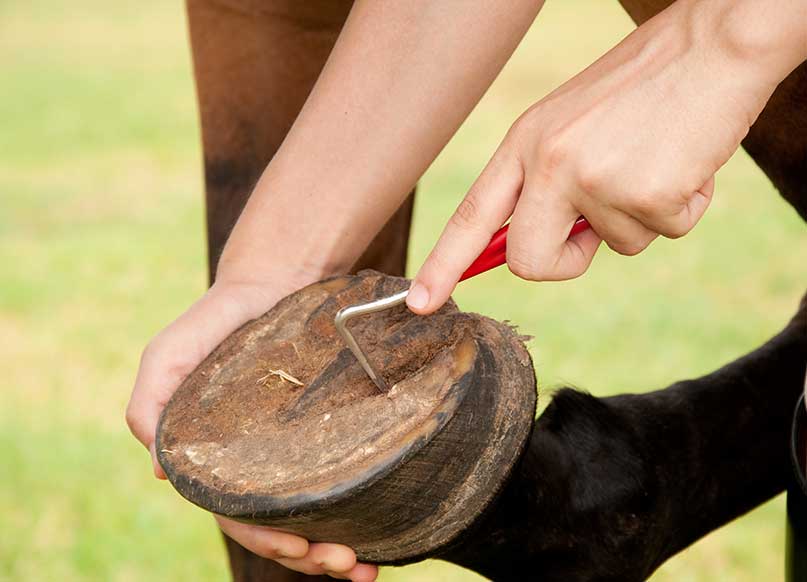
What to do!
When you begin training your horse, no matter their age, it is more than likely you will have to desensitise them to something.
Desensitising is when you continually apply a stimulus until a response is eliminated. For instance; the stimulus can be your hand patting their neck, brushing their belly, or putting a saddle on their back. By doing this, you are teaching your horse that this action that you are performing means them no harm and they should not be scared of it. If the horse gives no response, you are desensitising them to that stimulus.
These are the simple steps to follow to properly desensitise a horse:
- Create a stimulus
- Wait for NO response
- Release the stimulus and praise horse
- Wait 2 ??? 3 seconds and start the process again
If you are able to start desensitising your horse from when they are a foal, the process can be much easier and faster, however, desensitising works with all horses given the time and patience.
It is important to continue these desensitising methods religiously until there is no response at all, as if they are not done consistently or with no repetitiveness, the horse can learn bad habits. By leaving the stimulus on till there is no response and following up with praise or a reward, your horse will learn that this is not to be feared. However, if you remove the stimulus before the horse stops responding, you are telling them that whatever action they were doing at the time was correct (this could be stomping their feet or swishing their tail).
In most cases of desensitising, it can be vital to start with a lesser stimulus to gradually get the horse used to the sensation. When introducing a foal to brushing, start with a soft brush such as a horse-hair brush that they will easily accept. Keep stroking the horse with the brush (even if they are walking away and moving) until they stand still, which is when you can remove the brush. Continue this process until there is no reaction whatsoever from you horse. Once they are comfortable with the softer brush, you can gradually introduce new brushes that they will accept easier than they would have if you had used them initially.

What not to do!
A big mistake that many horse owners do is not giving the horse a release when trying to desensitise them. If you do an action to get a desired response from your horse and the horse gives you the desired response, you cannot continue that action as the horse doesn???t get a release and won???t realise what they did was the right reaction to your commands.
For example, if you are riding and put pressure on their mouth asking them to stop, and the horse pulls up but you continue to apply pressure and turn, you are not allowing a release for the horse to learn the correct response. This leads to confusion in the horse and therefore will most likely ignore your commands if this continues.
Horses are naturally flight animals, therefore desensitising them incorrectly can be very unsettling for them and make them panic. Keeping this in mind, many trainers/owners use misinformed training techniques that can mentally scar the horse for life due to the fact that they believe it is safer for them. These desensitising techniques include the use of flags, ropes or hoses around the horse???s legs that can spook the horse even more than they already are. For the horses safety and wellbeing, you should use your hands and create a bond with your horse, however if you feel as though you may be kicked, seek professional training help.
Progressive desensitisation combined with the ???approach and retreat??? method is the most effective way to properly train a horse. These methods teach the horse to become more confident while at the same time to not fear the stimulus. It is best to start as young as possible with your horse, however any horse can be desensitised with the right approach, technique, reward and patience.


